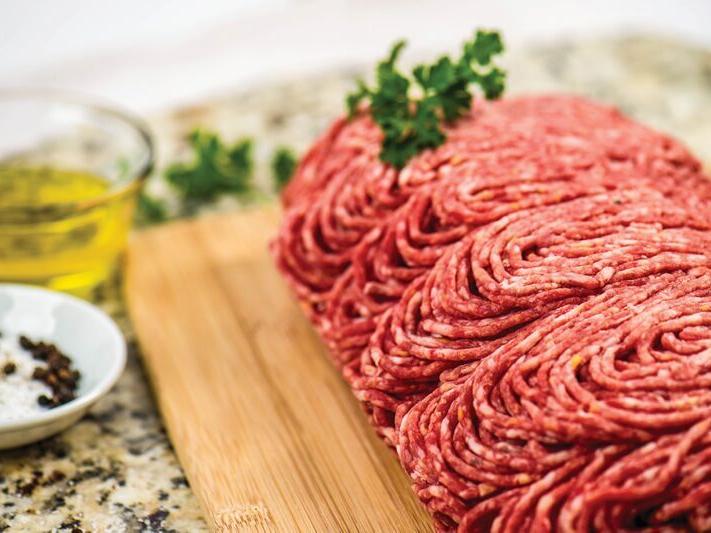
Ask Koreans about gamjatang, and they may get a little emotional as they think back to their grandmother’s version of this pork bone and potato soup.
Ask non-Koreans about gamjatang, and they probably won’t know what the heck you’re talking about.
“Gamjatang is probably in the top five popular Korean foods,” says chef Edward Lee, who focuses on Southern cuisine at 310 Magnolia, his Louisville, Ky., restaurant, but grew up eating gamjatang with his Korean-American family. “It literally translates to ‘potato soup,’ so there’s a million variations. It’s basically made of pork spine or neck, potatoes and whatever leftovers you have in your kitchen.”
Gamjatang, like chitterlings in the Southern United States, is a dish born of necessity that uses what others may toss in the trash. No one is going to argue that pork spine is a treasured cut of meat, but it was traditionally used in this soup because that’s what people could get their hands on inexpensively.
“Pork spine was a throwaway,” says Lee, “and using it comes out of the tradition of whole animal cookery, before it was trendy. You can even put tails or trotters in there.”
Gamjatang’s must-have ingredients are pork bone and potato. There’s some variation in what else chefs include, and different chefs argue more or less aggressively for this or that additional ingredient.
Many recipes call for the pork bones to be boiled first, “a traditional Korean technique,” says Lee. Chris Na, chef at Chicago’s Gogi, a Korean barbecue restaurant that serves an excellent gamjatang, says he always boils the meaty bones “to get rid of the smell” — the sometimes funky aroma generated by boiling pork.
In addition to pork bones, Gamjatang also usually contains scallions, perhaps cabbage and other vegetables, cooked in a broth of garlic, chile peppers and seasonings. Many of the better bowls of gamjatang are topped with both perilla leaves and roasted perilla seeds. Perilla, like shiso, is a member of the mint family. It tastes a little like basil with a citrusy applelike fruitiness; perilla seeds have a sesamelike flavor.
At Korean restaurants, Gamjatang is often served with a variety of banchan (little bowls of pickled radish, kimchi, sesame-dressed spinach and other palate-perking tidbits). Gamjatang is eaten with a spoon and either fork or chopsticks; both fork and sticks come in handy when pulling tender slivers of meat from the spine bone. After enjoying several bowls of gamjatang from restaurants and at home, we developed a protocol for eating the soup:
-- Don’t wear white to a meal of gamjatang, unless you’re headed to the laundry immediately after dinner. It’s messy.
-- The stone bowl is very hot, and although the gamjatang smells fantastic and you’ll want to start eating immediately, don’t. Give it a few minutes to stop bubbling and cool down.
-- Begin eating gamjatang by lowering a spoonful of rice into the bowl and letting it absorb the rich liquid. Then gingerly eat that spoonful before going straight for the steaming broth.
-- To make room to move around the bowl, remove some of the meat and bones to the side plate that’s traditionally set next to the stone bowl.
-- Slurp carefully: there may be bone chips in there.
The following recipe was developed by David Hammond in consultation with chef Edward Lee. For the pork spine, you may have to go to a butcher or a specialty Asian market.
Preparation time: 1 hour, 15 minutes
Cooking time: About 3 hours
- 2 pounds pork spine or neck (may substitute other bone-in cuts, like ribs)
- 18 medium cloves garlic, chopped
- 1 large onion, chopped
- 1 medium leek, chopped
- 1/4 cup gochugaru (Korean chile powder)
- 1/4 cup soy sauce
- 1/4 cup doenjang (Korean soybean paste; may substitute miso)
- 2 tablespoons gochujang (Korean chile paste)
- 1 tablespoon sugar
- 4 large potatoes, cut into 1-inch cubes
- 8 shiitake mushroom caps (or other Asian mushrooms, dry or fresh)
- 2 tablespoons chopped perilla leaves (or sub with shiso)
- 2 tablespoons perilla seeds (or ground sesame seeds)
- 2 teaspoons ground black pepper
- 4 teaspoons chopped green onions
- Steamed white rice
Soak pork meat and bones in a large stockpot of cold water for 1 hour. Drain and add 4 quarts water to the pot. Heat to a boil over high heat. Boil 5 minutes, then drain.
Add another 4 quarts of water to bones; heat to a boil. Add garlic, onion and leek; lower heat and simmer, 2 hours.
In a small bowl, mix the gochugaru, soy sauce, doenjang, gochujang and sugar into a paste.
Add potatoes and mushrooms to the pot; heat to boil. Add paste. Lower heat and simmer until potatoes are soft, about 25 minutes.
Serve in bowls with perilla leaves and seeds, black pepper and green onions, accompanied by rice.
Makes 6 servings.
July 29, 2020 at 05:12AM
https://ift.tt/2XmCCBx
Korean pork soup comforts with plenty of spice and pork richness - Grand Island Independent
https://ift.tt/2RsHZwT
Pork

No comments:
Post a Comment